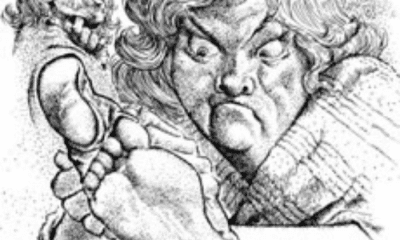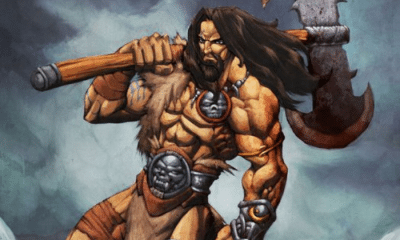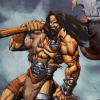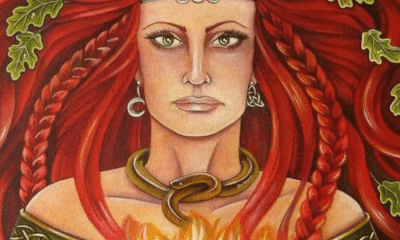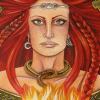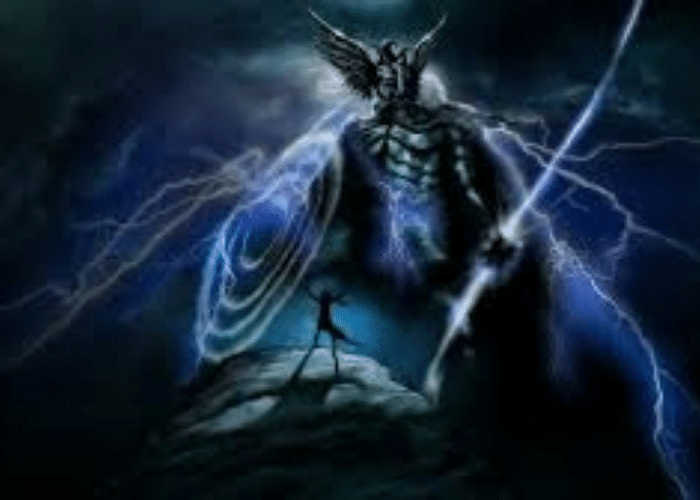
Irish
Who Was Taranis in Celtic Mythology?
Who Was Taranis in Celtic Mythology?
How was Taranis both one of Europe’s most widely-revered gods and one about whom the least is known today? Keep reading to find out how historians can tell us about Taranis even without any known myths!
When the Romans began conquering the European continent, they came into contact with a variety of cultures they had known nothing about.
While these cultures were foreign to the Romans, their gods often seemed very similar. They compared them to their own deities, believing that the pantheon they shared with Greece was real and foreign gods were their own under different names.
One of these was Taranis, whom the Romans compared to Jupiter. While they made claims about how he was worshipped, however, they did not say what his domain was or how he was characterized in myths.
Despite this, historians can tell us a lot about this Celtic god. They know that he was a god of thunder, a chief among his pantheon, and was likely known for having a quick temper and being a warrior.
How can historians know so much about a god that has no surviving myths? Archaeology, linguistics, and comparative mythology have shed light on a god that could have been a complete mystery.
The Mysterious Worship of Taranis
Taranis was a god who we know was widely-revered, but we have very few details about him.
The Celtic peoples of Europe did not have their own system of writing in ancient times. Their stories were passed down orally until after the time of the Roman Empire.
Therefore, much of what we know about their gods was recorded by the Roman people who came into contact with them.
The Romans, however, were not often concerned with recording the mythology of the Germanic and Celtic tribes they encountered as the conquered northern lands. Often, they did not even record the names the Celts used for their gods but instead compared them to Greco-Roman deities.
In Roman writing, Taranis is often compared to Jupiter or Brontes, a cyclops.
Like Jupiter, Taranis was a thunder god. He used his thunderbolt like a weapon in the same way that a human warrior would use a spear.
The Romans said that he was king-like, although this may have been because they associated him with their own sky god. Most historians believe that Taranis shared power with two other gods, Esus and Toutatis, in a triumvirate.
In addition to the thunderbolt he carried, the most prominent symbol of Taranis was the wheel. The prevalence of wheel statues, carvings, and amulets throughout Europe is some of the best surviving evidence of the god’s widespread cult.
Evidence also comes from some later source material. Irish legends, written by Christian monks in the Middle Ages, use the Irish name for the deity, Tuireann.
These Irish legends, written after the native Celtic religion was already in decline, give little more information than the earlier Roman accounts. They say that he was the father of important deities like Brigid, Brian, and Goibniu.
The Irish myths also say that Tuireann had died. After three of his sons were killed by Lugh as revenge for murdering his father, Tuireann died of grief.
Roman writers did not mention a similar story in their descriptions of Taranis, however, so it is unknown whether belief in his death was widespread or only known in Ireland.
In fact, Roman writers were less concerned with Taranis’s mythology than they were with his rituals. They claimed that he received human sacrifices, although archaeologists have found no direct evidence of this at any of Europe’s sacred sites.
My Modern Interpretation
While very little was written about Taranis or Tuireann in ancient sources, historians still have a good idea of where he fit into the mythology of the Celts.
The Romans associated him with their own supreme deity, Jupiter. This link was usually made not because of the position a god held in their pantheon, but because of what powers they commanded.
Jupiter, like his Greek counterpart Zeus, was the god of thunder. He used his thunderbolts like weapons and was usually pictured holding them.
Images of Taranis can therefore be identified by this attribute, although no inscriptions are present. Because these images often include the wheel as well, archaeologists know that the wheel was one of his symbols.
This is found in every Celtic area of Europe. Ireland, Britain, Spain, and the Danube River valley have all provided archaeologists with evidence that Taranis was one of the most widely-recognized gods in Europe.
Taranis is also similar to Jupiter in the belief that he existed as part of a triad.
Jupiter had two brothers, Dis Pater and Triton, who were his near-equals. While Esus and Toutatis may not have played precisely the same roles as these Greco-Roman gods, the three gods sharing and dividing power provides another link between Taranis and the thunder god.
Linguistics also prove that Taranis played a similar role in his mythology as Jupiter did in that of Rome.
The name Taranis is linked to those of many other sky gods, including Thor and Perun. Linguists believe that these names share a Proto-Indo-European root. *Torano, meaning “thunder.”
These gods were generally in positions of power. They were regarded as great warriors known for their quick tempers and violent tendencies, reflecting the unpredictable violence of thunderstorms.
The archetype of the powerful, smiting thunder god was a widespread one in Indo-European religions. Even the Judeo-Christian Yahweh is an example of a similar type.
Because of the written, linguistic, and artistic similarities between Taranis and other examples of this archetype, historians can be virtually certain that he was a quick-tempered and physically strong thunder god who was one of the supreme rulers, if not the chief deity, of his pantheon.
The age of this archetype may also explain why little mythology exists regarding Taranis.
While the Celtic god’s obscurity is largely due to a lack of written records, the Irish god is almost equally absent. Despite a relatively large number of written sources, Tuireann appears only as a secondary character in one major myth.
Irish mythology followed the gods through various generations. Their gods lived and died in the same way humans did, although they had enormous power and lived much longer than mortal men.
As an Irish god, Tuireann was a member of an older generation than the primary deities, many of whom were his children.
Historians generally interpret the Irish gods as representing successive beliefs as they evolved from different populations over time. It seems likely, given his relationship to the other Irish gods and the age of his archetype, that Tuireann was seen as part of an older pantheon that was no longer relevant.
One way in which Taranis deviated from the typical members of his archetype, however, was in his symbolism.
Wheels are used as a symbol in other religions for the sun. They represent both the passage of time and the chariots that pull the sun in many traditions.
Without other evidence, it would be reasonable for archaeologists to use this symbolism to call Taranis a solar deity rather than a thunder god.
Both types, however, are linked to the sky. It is possible that Taranis was thought of as a god of the sky as a whole, including both the sun and thunder, rather than of just one aspect of the sky’s power.
In Summary
The Celtic god Taranis, called Tuireann in Irish, is attested to in only a handful of Roman sources. The Celts themselves did not have a written language at the time, so these Roman writers provide the only written sources for the god’s name.
They compared him to Jupiter and implied that he was a king. Otherwise, no myths or family connections were recounted.
The Irish legends, written some time later, provide little more. Tuireann was the father of other prominent gods who died after three of his sons were killed.
Despite this lack of source material, historians have been able to piece together information about what type of god Taranis was.
The comparison to Jupitar and linguistic similarities to other European deities show that he was a thunder god, part of a widespread archetype. This knowledge has allowed archaeologists to uncover evidence of the god’s cult throughout Europe.
Gods of this type are generally leaders and warriors. They are known for their quick tempers, unpredictability, and the use of violence to enforce their laws.
It is likely that Taranis fit this archetype. Knowledge of Europe’s other religions has allowed historians to interpret Taranis as a character even though his mythology is lost.


